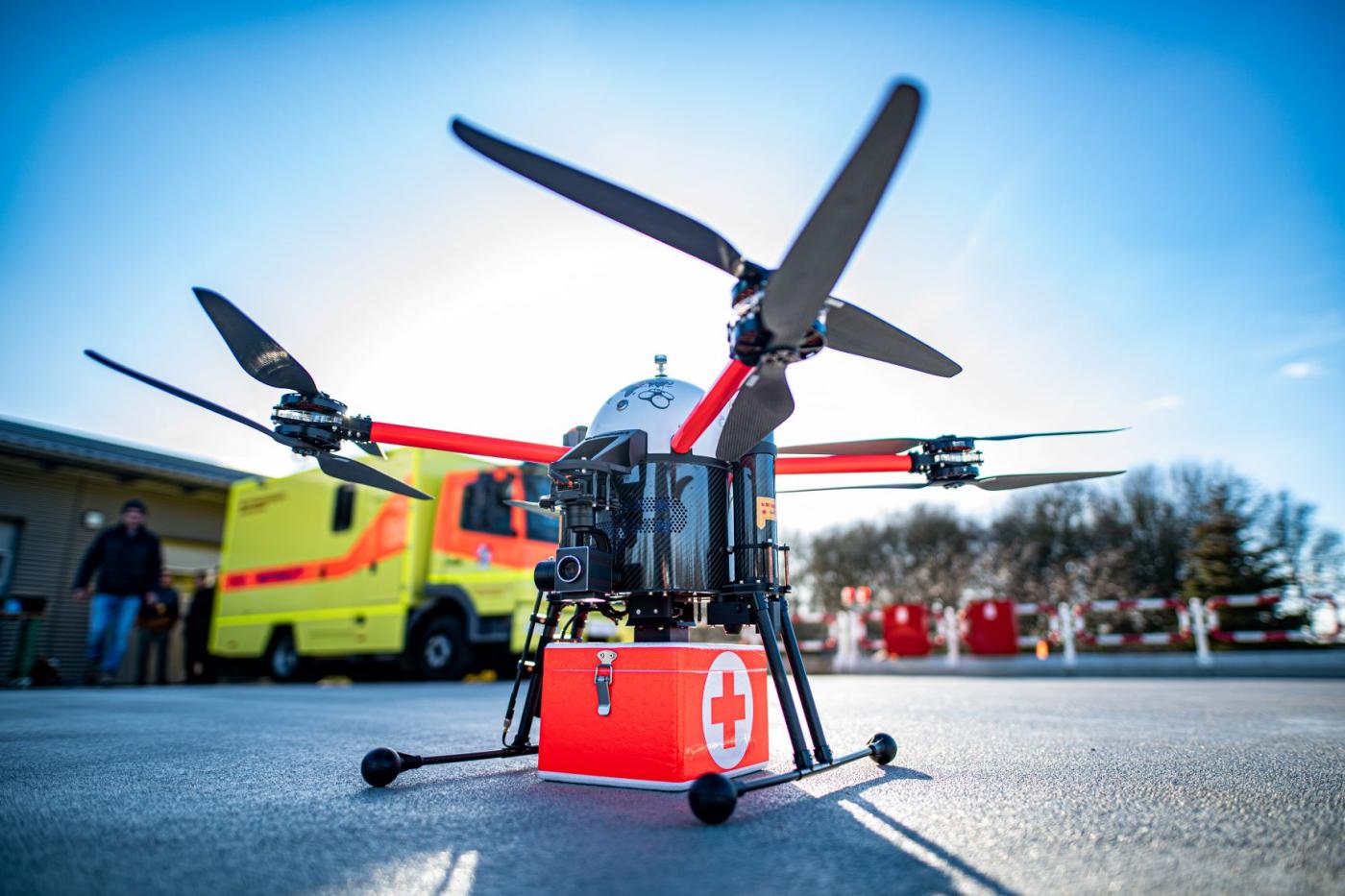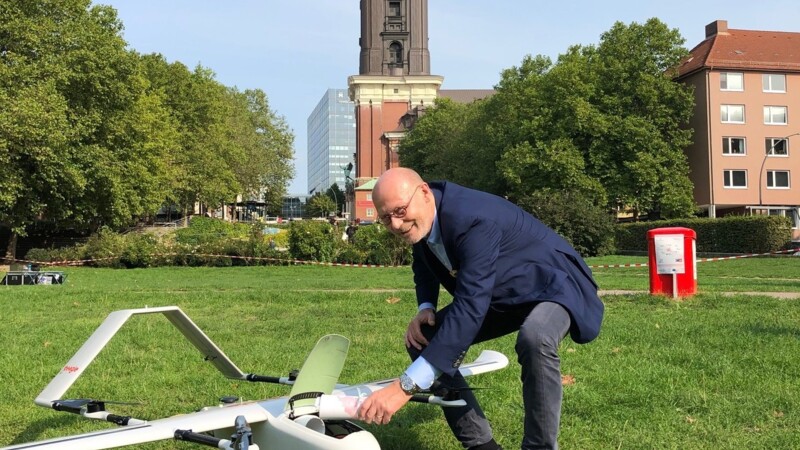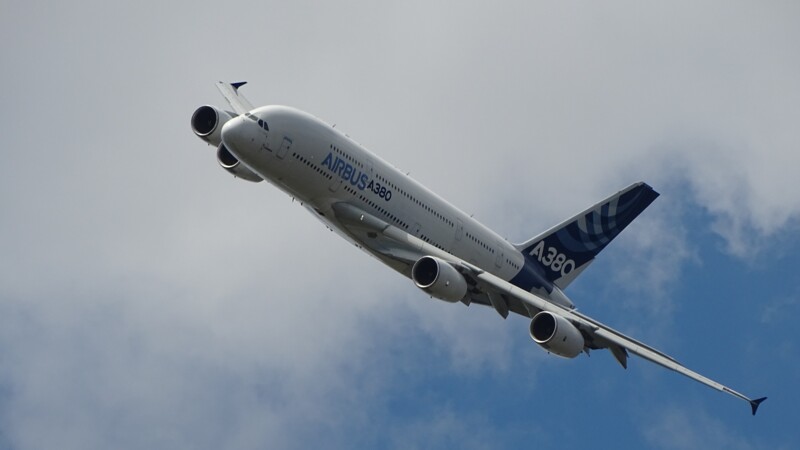Fortunately, Hamburg began working towards this turnabout long before corona. "Sustainability, digitisation and urban air mobility were identified as relevant future fields some time ago and we are now well on course to those goals," said Grosser. In September, for instance, Airbus presented three concepts for the world's first zero-emission commercial aircraft, which could enter service in 2035. The design drafts presented under the code name "ZEROe" all focus on an environment-friendly engine. The turbofan design targets medium-haul flights with a range of over 3,700 kilometres, while the turboprop design has an optimum range of just over 1,850 kilometres, making it suitable for short-haul flights.
The coronavirus pandemic has dealt a severe blow to aviation all over the globe and Hamburg is no exception. Yet, what does the future hold for one of the world's largest aviation centres? Julia Grosser, Communications and Marketing Manager at the Hamburg Aviation Cluster, said: "The long-term effects are not yet foreseeable. Giant aviation companies such as Airbus, Lufthansa and Lufthansa Technik have announced job cuts amid falling demand, and a large part of the workforce is currently on short-time work. The situation is probably very similar among the industry's suppliers." Aviation is undergoing a remarkable turnaround. Prior to the pandemic, the shortage of skilled workers forced companies to make greater efforts to attract young people - especially as demographic change looms when an entire generation retires in the near future. "This challenge remains and we hope that our members will think perspectival despite the crisis," said Grosser, who believes that demand will eventually recover. However, a "new normalityl" is on the horizon and "aviation will be different after the pandemic".
Urban air transport - issue of the future

Use of hydrogen
The "Blended-wing body" is the most futuristic design and in which the wings and the fuselage merge into one another - also known as a flying wing. Commenting on the importance of clean engines for the future of aviation, Guillaume Faury, CEO of Airbus, said: "I firmly believe that the use of hydrogen - as part of synthetic fuels as well as the main source of energy for commercial aircraft - has the potential to significantly reduce the impact of aviation on the climate."
Clean aviation strategy
Hamburg Aviation expects airlines to vie with each other in a bid a to emit as few emissions as possible in future and this will likely shape the industry for the coming decades, Grosser said. The focus will no longer be on faster, higher and cheaper, but on environment-friendlier. The European Union's Clean Aviation Strategy, for instance, foresees slashing 90 per cent of global CO2 emissions by 2050. Technology and design will save around 50 per cent while alternative fuels such as hydrogen will account for another 50 per cent in savings. "The Aviation Cluster Hamburg would like to play an active role in shaping the EU's Clean Aviation research programme. To this end, it drew up a strategy paper called the Green Aviation Technology Roadmap in summer outlining Hamburg's means of participation," said Grosser. The main recommendation is to develop Hamburg and northern Germany into a leading centre of competence for hydrogen-based air transport.
Unmanned aviation technology
The Centre for Applied Aeronautical Research (ZAL) in Hamburg is already working on environment-friendly hydrogen for aviation in connection with drone technology. The Cabin & Systems team at ZAL GmbH, for instance, is researching ZALbatros, a hydrogen-powered drone. During a recent test flight, the hexacopter achieved a total flight time of two hours and ten minutes unlike battery-powered drones that frequently land after just over half an hour in the air. The fuel cells in the ZALbatros with pressure accumulators have a much higher energy density than conventional batteries. The required amount of energy can be carried without the drone becoming too heavy.
ITS World Congress in Hamburg
The focus will also turn to drones during the 2021 ITS World Congress in Hamburg. The city is an official model region for developing civil uses of drones and other means of urban air traffic. Founded in 2017 in ZAL and co-ordinated by Hamburg Aviation since 2019, the Windrove network promotes the economic use of drones in the Hamburg Metropolitan Region. "We will have our own Windrove stand at ITS and will also present the Medifly Hamburg anchor project," said Grosser. Medifly is sponsored by the German Ministry of Transport and Digital Infrastructure and aims to integrate unmanned aircraft into urban airspace. During an upcoming test phase in 2021, medical samples will be transported across Hamburg and will form the basis for regular operations, if successful.

Seizing opportunities
Thus, the pandemic is not the dominant topic at the aviation cluster and the news is not all bad. In August, Hamburg Aviation announced the presentation of the Crystal Cabin Awards, the leading global award for innovations in aircraft cabins, in two new categories next year: "Clean & Safe Air Travel" and the "Judges' Choice Award". The winners will be announced parallel to the Aircraft Interiors Expo (April 2021) in Hamburg.
ys/pb
Sources and further information
More
Similar articles

Clusters co-operating across sectors in Hamburg

Scientists at TUHH researching climate-friendly aviation

Hamburg to become model of digital mobility
